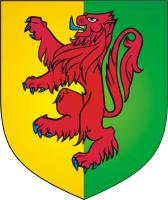viewtopic.php?f=25&t=25&p=84#p84
I have often posted examples of breaches of the so called tincture rules which occur in the Visitations and this is probably further proof that the rule is possibly not as ancient as we think. It would appear that the heralds at the Visitations weren't too offended by colour on colour or metal on metal and they certainly didn't take the stand that a coat of arms couldn't be a genuine coat of arms if it breached this code.

Rafe Lecester
Arms: Azure a fess Gules, fretty Or, between three fleur-de-lis of the last

Lecester of Tabley
Arms: Quarterly -
1 & 4 Azure, a fess Gules between three fleur-de-lis Or
2 Azure, a garb Or [Grosvenor]
3 Sable, a cross patonce Argent [Quarterly Argent and Sable, a cross patonce counterchanged Eton]
Crest: A dragon's head erased Vert
I'm sure that Members can find many more examples.




